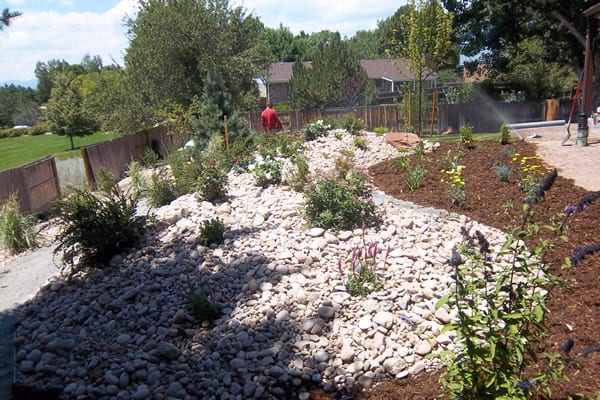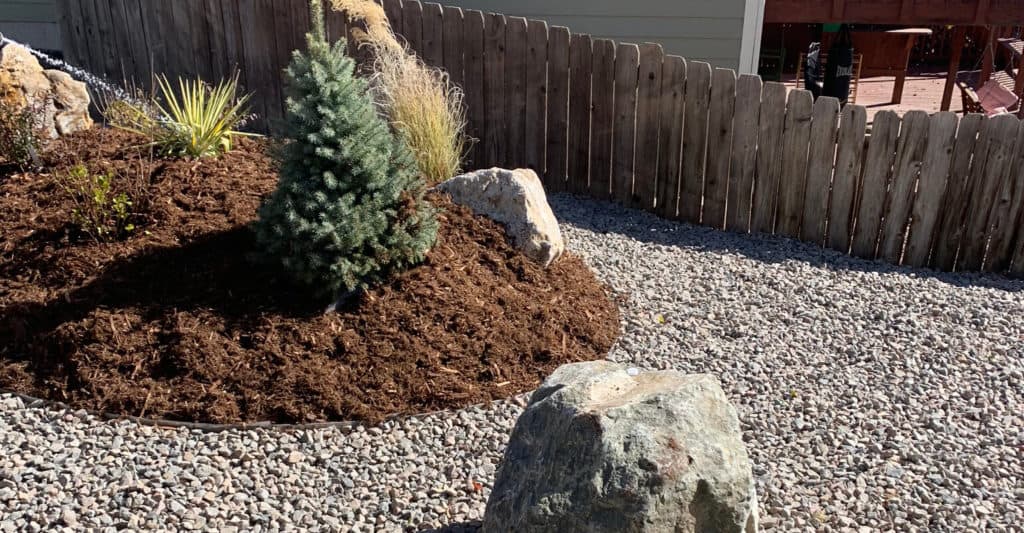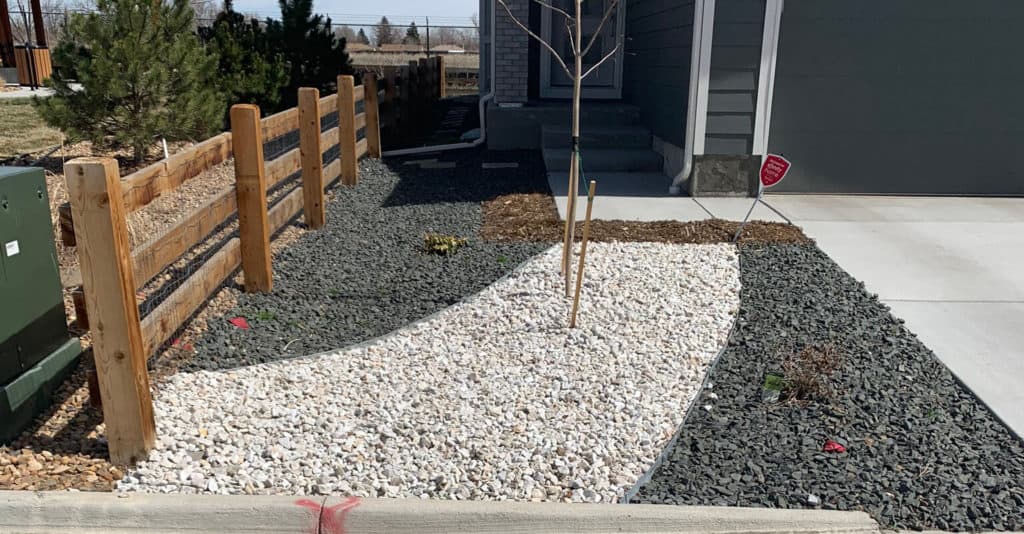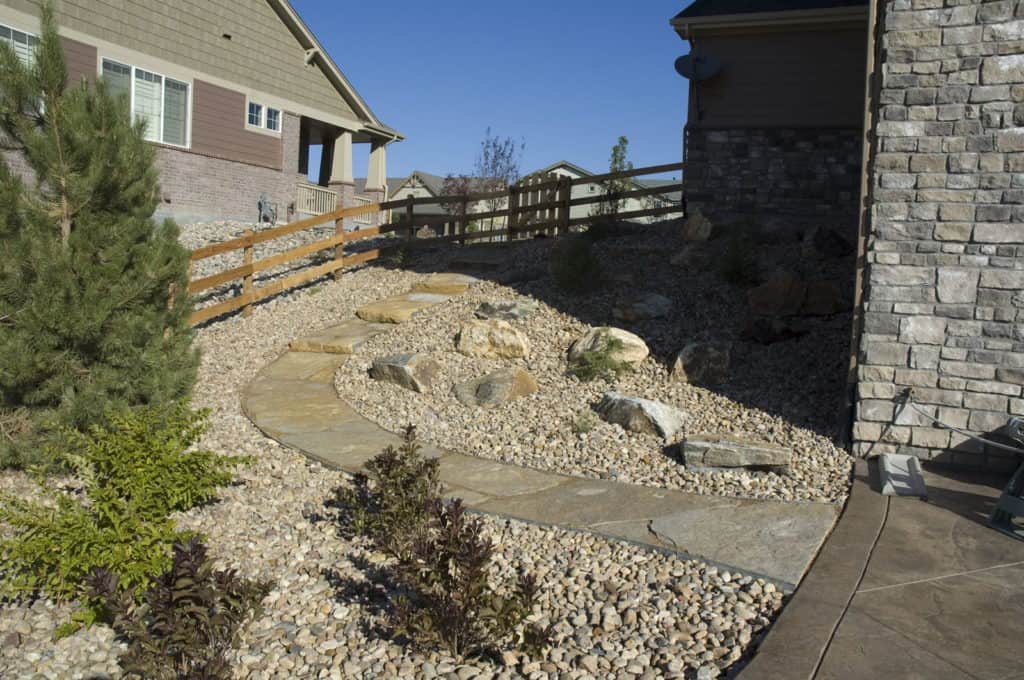Xeriscaping: Less Water, Less Effort
As a Denver homeowner, you may be looking for ways to create a beautiful landscape that reduces maintenance and uses less water. Green Mountain offers practical xeriscaping services that conserve natural resources, require less maintenance, and enhance the look of your property. Additionally, the water savings means that you’ll have to pay less to your water providers (like Denver Water).
Xeriscape Landscape Defined
The Denver metro area and Colorado’s front range are located in a xeric / semi arid climate. The word “xeriscape” comes from Greek. “Xeros” means dry, and “scape” refers to the view or look of the landscape.
You can select greenery that complements the unique attributes of your property. A vast range of xeriscape plants thrives in this area of Colorado, including trees, shrubs, flowers, herbs, ground covers, and grasses. Mixing types of vegetation creates an attractive street appeal and a welcoming, pleasant environment around your home. A xeric landscape results in an outdoor space with rocks, mulch and drought tolerant plants.

Seven Principles of Xeriscape Design
1. Proper Planning and Landscape Design
2. Ground Analysis and Improvements
3. Appropriate plant selection
4. Practical Turf Areas
Use turf effectively for texture, aesthetics, children’s play places, and high-traffic locations. Place turf grass in locations to take advantage of and enhance natural drainage.
5. Efficient Irrigation
6. Mulch
7. Appropriate Maintenance

Benefits of Landscaping with Native Colorado Plants
Selecting xeric plants is pivotal. Choose grasses, shrubs, and trees that thrive in Colorado’s semi-arid environment creates a vegetation community that provides many benefits, including managing stormwater runoff, reducing the amount of irrigation, saving energy, and retarding erosion.
Benefit: Aesthetically Pleasing
A well-planned and designed xeriscape is beautiful to look at. Mixing flora of various heights and proportions balances the scale and creates a layered effect that adds interest to the yard.
Benefit: Hardy, Adapted to the Local Environment
Native plants are well-adapted to the climate and soils of the Denver area. They are hardy, require less moisture, and complement Colorado’s natural environment. They better resist disease and infestations by pests than many introduced species.
Benefit: Reduce the Need for Irrigation
However, turf requires more moisture than most plantings for healthy root growth. A well-designed irrigation system should uniformly disperse moisture to foster turf root growth. Improving soil quality promotes deep roots.
Benefit: Protect the Environment
Benefit: Easy Maintenance
Planning the type and placement of grasses and shrubs reduces weeding, pruning, and fertilizing. Native plants are already adapted to the soils, temperatures, and amount of local rainfall.

Benefit: Saves Energy
In the winter, trees and shrubs planted as windbreaks reduce home heating costs because windbreaks reduce the speed of the wind as it approaches your home. Properly done, windbreaks lift the wind so that it flows over your home instead of across it.
Planning a Xeriscape Garden
If you are planning to renovate your yard using xeriscape principles, start by making a drawing to scale that shows all elements of your property, including patios, driveways, sidewalks, existing trees, and buildings. Include outdoor spigots, electrical outlets, underground pipes, utility lines, downspouts, walls, and fences.
A landscape professional will talk with you about how you use your yard, your sense of beauty, budget, and long-term needs. They also provide information about how to irrigate specific plants and trees and how to maximize moisture.
Xeriscape Plants Suitable for Denver's Climate
Save Water With Low Moisture Requirements
Trees and Shrubs
Tree Planting Considerations
Shrub Selection
Ground Covers and Flowers
Rocks and Gravel
